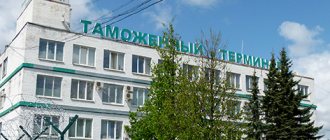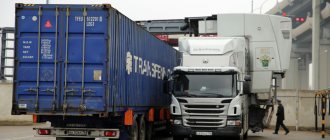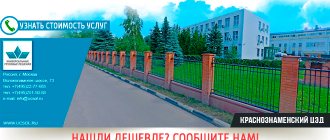All Far Eastern customs offices will be divided into three categories by 2021
As a result of the reform of customs authorities, all Far Eastern customs will be divided into three categories: customs of actual control, regional electronic customs and full-functional customs, said the head of the Far Eastern Customs Administration (FECU) Yuri Ladygin at a meeting of the Advisory Council for working with participants in foreign economic activity at DVTU.
Customs offices of actual control (and customs posts subordinate to them), as the name implies, will mainly carry out actual control (inspection, examination, measurements, weighing, etc.) of goods being moved. In addition, declarations will be partially retained at customs posts of actual control. For example, there will remain functions for declaring certain categories of goods or in special cases (related to the use of a paper declaration form or the peculiarities of control in relation to certain customs procedures), as well as certain categories of persons (individuals, diplomats).
Electronic customs and electronic declaration centers (EDC) will conduct electronic declaration of goods and documentary control. It is planned that in the region where DVTU operates, a Far Eastern electronic customs office and two customs posts - electronic declaration centers (Vladivostok, subordinate to Vladivostok customs, and Far Eastern, subordinate to the Far Eastern electronic customs) will be created, at which the bulk of declarations will be concentrated. The Vladivostok Customs Post (VCP) will process goods imported by sea, and the Far Eastern Customs Post (FEC) will process goods imported by other modes of transport.
A fully functional customs office (at DVTU this will be Vladivostok customs) will be able to carry out both declaration and actual control of goods.
There are two main stages in reforming the customs authorities of the Far Eastern region:
— stage 1 (until the end of 2021) concentration of declarations for goods transported by sea at the Vladivostok customs post (CED);
— Stage 2 (2020) creation of the Far Eastern electronic customs, ensuring the functioning of the Far Eastern Customs Post (FEC) and concentration of declarations for goods transported by other modes of transport.
Today, 80% of declarations for goods imported by sea in the region of operation of Kamchatka, Magadan, Sakhalin and Nakhodka customs are registered and processed at the Vladivostok customs post (VCP). By the end of 2021, all declarations for goods imported by sea in the region where DVTU operates will be processed in this EDC.
To implement the second stage of reform, DVTU has worked out and the Federal Customs Service of Russia has approved the structure, staffing and location (in the city of Artyom, Primorsky Territory) of the Far Eastern Electronic Customs and the Far Eastern Customs Post (FEC) subordinate to it. The actual creation of the customs office and customs post will begin in the 4th quarter of 2021.
Reference:
Large-scale reform of the system of customs authorities of the Russian Federation is being carried out by the Federal Customs Service in accordance with the Detailed Action Plan of the Federal Customs Service of Russia for the implementation of the Action Plan (“road map”) for reforming the system of customs authorities in the period from 2021 to 2021, approved by order of the Ministry of Finance of Russia dated January 9 2021 No. 2. It is planned to gradually create regional electronic customs offices and concentrate electronic declaration processes in electronic declaration centers. Customs offices and subordinate customs posts of actual control will also function.
Currently, the reform has entered the phase of actual implementation. Of the 9 regional electronic customs planned for creation, 3 customs have already been created: in the Volga, North Caucasus and Ural customs departments.
Reforming customs authorities will make it possible to more efficiently use the resources of customs authorities, which will lead to an increase in the quality of customs administration and a reduction in customs clearance time.
DVTU Public Relations Department
DVTU details: inn, checkpoint, okopf, okogu, okpo, ogrn, okato
OGRN: 1022502268887
Taxpayer Identification Number: 2540015492
Checkpoint: 254001001
OKPO: 283104
OKATO: 5401364000
Get an extract from the Unified State Register of Legal Entities about DVTU
The DVTU organization was registered on June 3, 1992. Registrar – Inspectorate of the Ministry of the Russian Federation for Taxes and Duties for the Frunzensky District of Vladivostok.
Budget institutions
Federal property
Types of activities according to OKVED: Public administration and ensuring military security, compulsory social security General public administration Management of financial and fiscal activities
DVTU: address, phone, fax, email, website, work schedule
FAR EASTERN CUSTOMS ADMINISTRATION
Region: Primorsky Krai Vladivostok
Address: 690014, VLADIVOSTOK, st. GOGOL, 48
Telephone:, (4232) 30-83-57
Fax: no data
Email: no data
Website: no data
General director / person in charge / owner of DVTU: no data
Working hours: Mon-Fri: 7-19, Sat-Sun: 11-15
Found an inaccuracy in the description or want to provide more information about the company? - Write to us!
Detailed information about DVTU: accounting, balance sheet. Download bank details, tenders, credit history, taxes of DVTU.
DVTU: the construction of dry ports will help solve the problem of container collapse
In honor of Customs Day and the 30th anniversary of the formation of the Federal Customs Service (both dates were celebrated on October 25), the head of the Far Eastern Technical University, Lieutenant General Yuri Ladygin, spoke about the modern work of the department. Today, the Far Eastern customs is actually responsible for customs clearance of goods on 40% of the territory of Russia, and in the “post-Covid” period, trade turnover has increased significantly. There were some hiccups - the container collapse attracted the attention of the media and residents of the region. How you manage to cope with difficulties and in what direction the work of the Far Eastern customs is structured today - in the material VL.ru.
For export and import
The “post-Covid” period (this does not mean the end of the pandemic, but the lifting of a number of restrictions - Note VL.ru) brought a practical double increase in trade turnover, which is recorded by DVTU - today it is $29.3 billion (+44% compared to last year). The value of exports increased by 27% and amounted to $6.6 billion, the volume of imports increased by 50% and amounted to $22.6 billion.
Cars continue to play a significant role in the growth of import turnover, accounting for 46.6% of the value of goods imported to the Far East. In just 9 months of this year, almost 80 thousand passenger cars (+22% compared to last year) imported by individuals were registered.
The top three countries of export-import counterparties of Far Eastern companies are still comfortably China (62% of trade turnover - $18.2 billion), South Korea (14.6%) and Japan (7.4%).
However, according to Yuri Ladygin, covid restrictions have made significant adjustments to the work of the business. Thus, the PRC has reduced the purchase of our fish products and is now ready to accept fish only in containers on special pallets, packaged in such a way as to protect against infection. As a result, China and South Korea swapped places in terms of the volume of purchases of fresh frozen fish from Russia: if previously only 22% of fish exports went to the Republic of Korea, today this figure has reached 65.3%. Japan also increased its consumption of Russian fish exports to 4.3% from the previous 1.8%.
On the contrary, after the Rosselkhoznadzor ban on the import of stone fruits from China, this import item has virtually dried up. Therefore, if you see apples or pears made in China on store shelves, then this is either a lie or a provocation, notes Yuri Ladygin.
Despite all these introductions, the export of Russian products to China is still growing. Our neighbor is interested in Russian fresh milk, dairy products in general and grain. Live crab turned out to be at the peak of demand; sometimes 70 trucks are lined up on the Chinese side, waiting for the crustaceans to be delivered through the Far Eastern customs points of Primorye.
Exports of processed timber increased by 7% (2.03 million tons), its value increased by 42% (to $415 million). However, in general, timber exports from the Far East decreased by 4.5% - only 5.2 million tons were processed over 9 months.
Container "skyscrapers"
Over the past 9 months, the number of participants in foreign trade in the Far East has increased by 28.5% - up to 19,354. According to Yuri Ladygin, such figures demonstrate both the serious burden on customs workers and the unprecedented increase in cargo traffic at ports: Vladivostok accounts for 253.17 thousand containers, and on Vostochny – 132.16 thousand containers since the beginning of the year (an increase of 39% and 75%, respectively).
Businesses in Japan and China have already realized that today they can save on the freight of ships heading to Europe - new transit routes run by land through Russia. For example, if you deliver a container to the port of St. Petersburg by rail, it will cost $8-8.5 thousand, and by sea it will be much more expensive - $13-14 thousand.
“Every day we have 11-13 thousand containers under control, their number is growing literally before our eyes, and in the ports there are already five floors of containers. While the cargo processing process is underway, the container that requires inspection is already filled with new “boxes”, and the next day it must be taken out from under a huge pile, which means other tons of cargo must be rearranged. Sometimes such procedures take a day or two,” says the head of DVTU.
“We understand that the ports of Vladivostok and Vostochny are significantly limited in their areas, because their throughput capacity is only 20-25 thousand containers per day. However, such a tense situation will sooner or later force port owners to think about creating dry ports outside cities, where cargo could pass customs control and go on its way,” says Yuri Ladygin.
A related problem is railway congestion. If previously, after being released into free circulation, a container left Primorye within a day or two, today a delay of 3-5 days is possible. A significant load associated with the growth of container traffic is observed in Ussuriysk, through which cargo from China travels by rail to the west - primarily to Belarus and the EAEU countries.
Checkpoints - no repairs
The growth in trade turnover today is obvious if you look at the work of border checkpoints - arriving goods are accumulated in temporary storage warehouses. At the same time, Yuri Ladygin admits that the difficult situation with queues in Kraskino and Poltavka continues - despite the increase in work schedule.
Thus, the customs control point in Kraskino allows the passage of 50 cars in both directions during the day. At the same time, he works daily and without breaks from 9 a.m. to 10 p.m. Most likely, this regime will continue over the next year.
Far Eastern customs officials hope that in 2023-2024. Rosgranstroy, which is responsible for the arrangement of customs checkpoints, will commission new buildings and control points in Kraskino and Pogranichny. This year, only the first steps were taken: work trailers were installed to accommodate employees in the winter, a weighing facility and a special area for storing goods were equipped.
The free port of Vladivostok is open only to giants
Over the course of five years, residents of the free port of Vladivostok and TASED received customs benefits totaling 84 billion rubles. They placed 551.7 thousand tons of goods with a total value of more than 372.5 billion rubles under the free customs zone procedure. However, in the Far Eastern Federal District there are only 10 permanent customs control zones (PCZC), including eight in Primorye.
Thus, the free customs zone of the free port of Vladivostok, according to Yuri Ladygin, was initially created for large manufacturing enterprises that were focused on importing new technological equipment. Therefore, the point of view that the entire territory of Vladivostok is a free customs declaration zone, as many residents believe, is not correct.
Such a free customs zone makes sense for the largest enterprises that can afford to build a business within its framework and begin producing modern products in the future for the foreign market. For companies that expected to create 4 jobs at their enterprise, PZTK cannot become a working option.
“We have repeatedly met with the author of the law on FPV, State Councilor Pavel Volkov, and he also agrees with the fact that the free customs regime was created specifically for innovative enterprises that will produce products on an industrial scale, otherwise starting such a project is pointless. <…> Such enterprises import equipment worth hundreds of billions of rubles, and they, accordingly, receive huge benefits in paying customs duties,” explained the head of the Far Eastern Technical University.
Optimization of the customs process
As Yuri Ladygin told a VL.ru correspondent, significant changes in the work of the customs service over the past decades have most clearly manifested themselves in the organization of customs declarations - 82% of declarations in the Far East go through an electronic procedure. As a result, over 30 years, the number of reporting customs offices has been reduced from 20 to 9, two of which are located in Vladivostok - Far Eastern Electronic Customs and Vladivostok Customs. The transition to electronic declaration of goods entailed a reduction in personnel. In just a year and a half, the personnel of all customs offices in the Far East was optimized by 264 people.
However, reducing the number of employees should not lead to lower quality work. On the contrary, in general, 90% of declarations today leave customs virtually the next day. Only 10% of them have to be checked: the goods listed there are either scanned in containers or examined in person. Optimization has become a necessary process on the way to the future - to technical and organizational improvement of work.
Yana Maltseva





